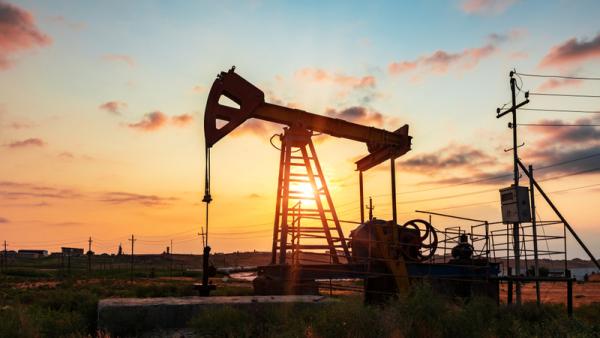What the oil crash means for Australian exports
Vastram / Shutterstock

Xunpeng Shi, Principal Research Fellow, Australia-China Relations Institute, University of Technology Sydney |
This article appeared in the Asia & the Pacific Policy Society’s blog, Policy Forum, on March 16 2020.
On Monday, March 9, world oil markets suffered their biggest loss since the Gulf War in 1991, with prices hitting their lowest since February 12 2016. Given weak demand and an ongoing price war, some speculate prices will drop into the $20 range per barrel sometime in 2020.
The crisis in the oil market began with a decline in demand caused by the coronavirus outbreak, but the coronavirus is not its only cause. Markets predicted the epidemic-induced demand drop – as reflected in the downward trend of prices before the crash – so the virus cannot totally explain such a sharp fall in oil prices.
Rather, the Organization of the Petroleum Exporting Countries’ (OPEC) failed attempt to further cut oil production triggered a supply shock. To prevent oil price decline in response to the coronavirus, on March 5 OPEC recommended a further 1.5 million barrel daily output cut from OPEC countries and its strategic ally – Russia.
However, at the OPEC+Russia conference held in Vienna on March 6, Russia rejected the plan, resulting in an immediate drop of international oil prices by more than 10 percent in a single day, an event likely to have triggered the crisis.
The crisis further deepened on Saturday March 8 when Saudi Arabia, the world’s biggest oil exporter, slashed its official prices by up to eight dollars per barrel — the largest price cut in at least 20 years, and signalled its intention to flood the market.
Some analysts believe that Saudi Arabia is doing this in an attempt to punish Russia, the world’s second-largest exporter, for abandoning the so-called ‘OPEC+’ alliance, as well as to cement Saudi Arabia’s role as the world’s top oil exporter.
One thing is clear. The ongoing price war will damage the interests of all major players, including Saudi Arabia.
The price of the Saudi oil company Aramco’s stock tumbled over the weekend of March 8, and the International Monetary Fund predicts that Saudi Arabia needs oil prices at $80 to $85 a barrel to balance its budget in 2019.
The Saudis are, however, right to think this will hurt Russia too. Its National Wealth Fund – where it accumulates oil revenues – is believed to have a break-even price of $42 a barrel. If oil prices fall below $40, a nasty pincer movement from the rouble exchange rate could further reinforce the adverse impact of this.
The American shale sector – the new ‘swing producer’ in oil markets that has made the United States the world’s number one oil producer – is also expected to experience very sharp pain in the near term. Some even argue that sacrificing OPEC+ is a tactic from Russia designed to damage American shale producers, which have accumulated roughly $86 billion of debt due in the next four years, since shale producers require high oil prices to stay profitable.
However, the global economy, not simply one export market, will suffer considerably from the double hits of the coronavirus and the uncertainty from oil crisis, as evidenced by the worst day in the United States and United Kingdom stock markets in more than 10 years.
With all major players suffering, a price war is not a sustainable scenario. Eurasia Group, in its brief on March 9, claimed the price war between Saudi Arabia and Russia is likely to be limited and tactical.
It views it as a Saudi manoeuvre, not an attempt to collapse the market, but a tactic to get Russia back to the negotiating table.
While it is not clear when the price war will be finished, the pressure on oil prices will be persistent as long as the coronavirus continues to spread to other oil-buying countries.
While the oil crisis puts high pressure on oil producers, low prices resulting from it could be a timely stimulus for net oil importers, with China, the United States, India, Japan, and South Korea, the top five buyers in 2019, perhaps able to save money during the price war.
China’s crude oil imports set a record for a 17th straight year and amounted to 506 million tonnes – equivalent to more than 10 million barrels per day – in 2019. By these numbers, a $1 drop in the average oil price, as happened over the weekend of March 9, could save China $3.7 billion in a year.
While Australia will also benefit from a low crude oil price as a net oil importer, the overall impact on the Australian economy is likely to be adverse. Low oil prices will damage Australia’s second- and fourth-largest exported commodities, natural gas and thermal coal.
This is because Australia sells the majority – 82 percent in 2017 – of its gas under long-term contracts that index gas prices to crude oil prices.
For companies with these contracts, a low oil price will result in low gas prices, and thus reduce Australia’s export revenue from the resource, which stood at $50 billion in 2018-2019.
The price drop also threatens Australia’s $26 billion of thermal coal exports, since thermal coal and oil prices have been falling roughly in tandem since December 2014.
Given that coal and natural gas exported account for 18 percent of Australia’s total goods exported to China in 2019, their declining prices could mean decreased bilateral trade value, resulting in under-estimation of overall bilateral trade growth, and potentially poor decisions.
Overall, while price falls could save Australia money in petroleum imports, their impact is more likely to hurt the country if these low prices persist over time.
Author
Xunpeng Shi is Principal Research Fellow at the Australia-China Relations Institute, University of Technology Sydney.

